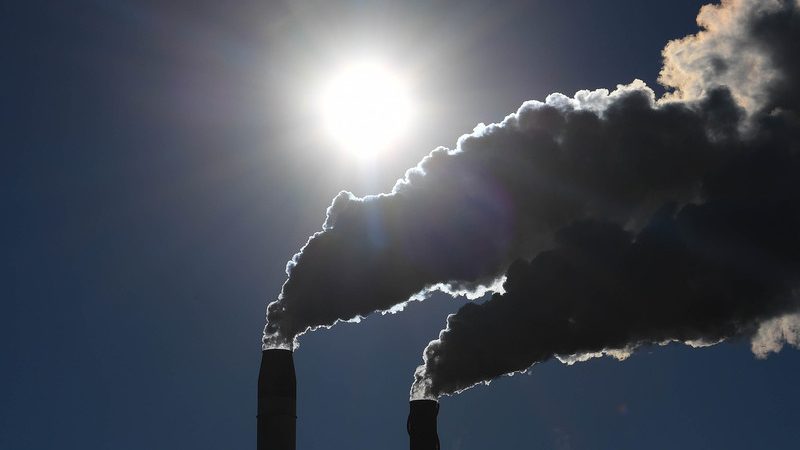The US iron and steel industries are shrugging off the EU’s latest plan for a carbon border adjustment mechanism, experts told S&P Global Commodity Insights.
Members of the European Parliament reached a provisional agreement with the European Council in December 2022 on a law to establish the new carbon fee. Under the rule, companies importing select products “including iron, steel, and some items made of the two metals” will be required to buy certificates that represent the difference between the carbon price paid in the country of production and the carbon price in countries participating in the EU emissions trading system. Once finalized, the policy will go into effect in October, beginning with a transition period.
Iron and steel could have high fees, given the industry’s carbon-intensive industrial processes, but US producers are unconcerned: EU countries are not big customers. The world imported about $37.1 billion worth of US iron, steel, and iron and steel products in 2021, up 34.1% from 2020, according to data from Panjiva. Western European countries, which include the largest economies in the EU, bought only $1.3 billion worth, or 3.6%, of US exports.
Panjiva is the trade analysis unit of S&P Global Market Intelligence, a division of S&P Global.
“We’re not particularly concerned about the EU [carbon border adjustment mechanism, or CBAM] … principally because only a very small percentage of US steel exports go to the EU,” said Kevin Dempsey, president and CEO of the American Iron and Steel Institute, a trade organization for US iron and steel producers. “I think the issue of carbon tariffs is an important one, [and] we’re not advocating for a system like in the EU, but I think some of the ideas that are being discussed in the US about a tariff at the border that is based on that differential between domestic industry [carbon] intensity and foreign producers’ emissions intensity do have a lot of merit.”
Export destinations for US iron and steel products have been heavily concentrated in North America in recent years. Canada received 8.9 million mt, or 61.4%, of US iron ore exports in 2021, according to S&P Global data.
Mexico took the lead on purchases of US iron, steel, and iron and steel products, receiving $11.7 billion worth, or 31.7%, of US exports in that category in 2021. Canada followed closely with $11.5 billion in imports of the same materials. Both countries’ individual consumption was roughly nine times higher than that of Western Europe as a whole.
Canada and Mexico have free trade agreements with the US as well as their own carbon pricing systems, reducing concerns that any EU adjustments would affect the market for US products.
Despite the EU’s relatively small demand for US iron and steel, the border adjustment proposal has sparked concern among some policy analysts about a split in global climate approaches that could undermine the effectiveness of carbon pricing systems.
“When it comes to particularly heavy industries like steel … domestic policies alone in the US or in the EU can only really do so much from a climate perspective; the real goal has to be global,” said Noah Kaufman, a research scholar at Columbia University’s School of International and Public Affairs’ Center on Global Energy Policy. “If you’re a policymaker in the US or the EU and you want this global change, you really need to have a vision for how we are going to cooperate and leverage our joint economic and geopolitical power to try and get more of a global agreement on the decarbonization of the sector.”
The US Congress has not passed legislation for a federal carbon pricing scheme or any legislation in response to the EU’s CBAM, although some lawmakers have criticized the EU for what they see as “rogue” behavior. Instead, the US has sought to incentivize clean energy adoption that would reduce the carbon intensity of industrial production, while urging international partners to jointly develop a carbon management system.
“Despite an environment ripe for cooperation and collaboration on climate policy, the European Union has gone ahead with its [CBAM] on its own,” Sen. Kevin Cramer, R-North Dakota, and a member of the Senate Environment and Public Works Committee, wrote in an opinion piece for The Wall Street Journal. “Instead, the EU should step back and work with the US and other allies to develop a trade-centered approach that rewards high environmental performance and holds the world’s polluters accountable.”
Meanwhile, US trade officials proposed forming a “club” of steel-producing countries that would pay carbon emissions tariffs based on an emissions intensity standard to be negotiated. The US Trade Representative sent a proposal describing the plan to the EU, Reuters reported in December.
“There would be an advantage of being in the club, as it would provide a lower level of carbon tariffs, while countries outside the club would pay higher tariffs,” an unidentified source familiar with the plan told Reuters.
This kind of approach is one that US steel producers are likely to support, Dempsey said.
“We do need to, I think, work towards a broader international consensus on the right way to approach a carbon tariff regime,” Dempsey said. “I think the more flexible approach based on actual carbon intensity rather than on domestic taxes or domestic allowance prices is a better approach, and it’s worth further consideration and discussions with our colleagues in Europe and in many other parts of the world.”
S&P Global Commodity Insights reporter Camellia Moors produces content for distribution on Capital IQ Pro.
— Camellia Moors






